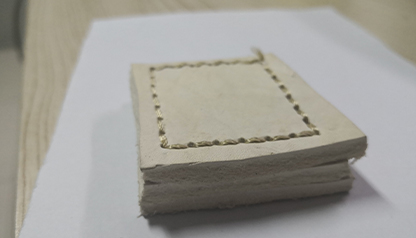A Comprehensive Guide to Effectively Using Twin Stretch Needles for Sewing Projects
How to Use a Twin Stretch Needle
The twin stretch needle is a versatile sewing tool designed specifically for stretch fabrics like knits, spandex, and jersey. It allows you to create beautiful double-needle stitches that give your garments a professional appearance, while also helping to maintain the stretch and flexibility inherent in these materials. Below, we’ll walk you through the basics of using a twin stretch needle, from choosing the right needle to sewing techniques and tips.
What is a Twin Stretch Needle?
A twin stretch needle features two needle points attached to a single shank. The two needles allow you to sew two parallel lines of stitching in one pass, which is not only decorative but also increases the strength of the seams. The needle is specifically designed with a special, rounded tip that prevents the fabric from snagging or tearing, making it ideal for materials that experience a lot of stretch and movement.
Choosing the Right Needle Size
Twin stretch needles come in various sizes, typically indicated by a number that represents the width of the needle in millimeters. For lightweight fabrics, a 2.0/75 or 2.5/80 twin needle is often suitable. For medium-weight fabrics like t-shirt knits, a 3.0/90 needle is usually adequate. Heavier fabrics may require a larger needle. It’s important to match your needle size to the thickness of the fabric to achieve the best results.
Setting Up Your Sewing Machine
1. Insert the Needle Begin by inserting the twin stretch needle into your sewing machine. Make sure to place it correctly in the needle holder and tighten it securely. Check your machine manual for specific instructions on needle installation if needed.
2. Threading Your Machine Twin needles require two spools of thread. Place them on separate thread spools and thread each needle point. You can use the same color thread or two different colors for a decorative effect. Ensure both threads are tensioned correctly and run smoothly through the tension discs.
how to use twin stretch needle

3. Selecting Stitch Settings Most sewing machines have a specific setting for twin needles. It is important to select either a straight stitch or a zigzag stitch depending on your project. However, avoid using stitches that are not recommended for twin needles, as this could lead to skipped stitches or damage to the machine.
Sewing Techniques
Once everything is set up, you’re ready to start sewing. Here are some tips to ensure a successful sewing experience
1. Test on Scrap Fabric Before sewing your actual garment, always try out the twin stretch needle on a scrap piece of the same fabric. This allows you to adjust the tension and stitch length for optimal results without risking your project.
2. Use the Right Foot If your machine includes a walking foot or a special foot for stretch fabrics, use it. This will help feed the fabric evenly and prevent it from stretching out of shape as you sew.
3. Sewing Speed When using a twin stretch needle, it is advisable to sew at a moderate speed. This allows you to maintain control over the fabric and ensures accurate stitching.
4. Finishing Seams After sewing, make sure to finish the seams appropriately. You may use a serger or an overlock stitch to prevent fraying for a clean finish.
Conclusion
Using a twin stretch needle opens up a new realm of possibilities for sewing with stretch fabrics. By following these guidelines and practicing your techniques, you can create durable, professional-looking seams that enhance the quality of your garments. Whether you're making a fitted dress, leggings, or a casual t-shirt, mastering the twin stretch needle will become an essential skill in your sewing repertoire. Happy sewing!
-
Leather Sewing Machine: The Industrial Standard for Tough MaterialsNewsJul.18,2025
-
Sail Making Machine: Heavy-Duty Stitching for Industrial and Marine NeedsNewsJul.18,2025
-
Sling Sewing Machine: The Backbone of Heavy-Duty FabricationNewsJul.18,2025
-
Leather Sewing Machine: Precision for Heavy-Duty StitchingNewsJul.18,2025
-
Big Bag Sewing Machine: Powering the Future of Bulk PackagingNewsJul.18,2025
-
FIBC Sewing Machine: Essential Equipment for Bulk Bag ProductionNewsJul.18,2025
-
Heavy Duty Leather Sewing Machine: A Must-Have for Professional LeatherworkNewsMay.28,2025





























